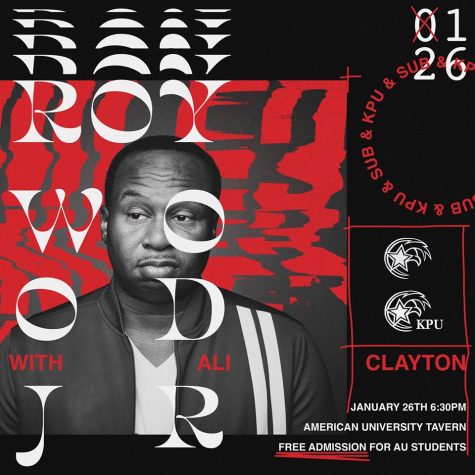Investigating Sexual Assault on Campuses: Standing with Survivors
In 2012, the University of North Carolina at Chapel Hill’s dignified image was tarnished when they shamed a student during a judicial hearing .
Landin Gambill, who reported that her ex-boyfriend raped her, was met with degrading and accusatory questions during the ensuing honor court hearing. According to Caitlin McCabe and Paula Seligson of the Daily Tar Heel, after Gambill’s ex-boyfriend was found not guilty, Gambill was then charged by the honor court with creating an “intimidating and hostile” environment for her ex-boyfriend on campus.
Gambill was one of five women who filed complaints with the U.S. Department of Education early last year against UNC over its internal process for handling sexual assault cases.
On the heels of Gambill’s case, numerous other stories arose of colleges mishandling sexual assault, creating a nationwide stir. In response, colleges have tightened up their procedures for dealing with sexual assault allegations.
Sexual Violence in the United States
Sexual violence is a prevalent and personal issue. As a crime that affects many people, it has a lasting impact on our culture as a whole. And college campuses are notorious for instances of rape and sexual assault.
This issue “affects such an extraordinary number of people,” said Scott Berkowitz, president and founder of the Rape, Abuse & Incest National Network (RAINN). “The lifetime risk is one out of every six women and the risk in college is even higher. This is a violent crime that can have tremendous long-term effects on victims.”
“Three out of 100 perpetrators will never spend a day in jail,” reported Daniel Rappaport, American University Sexual Assault Prevention Coordinator. “And I would be hard-pressed to think it’s even that high, as rape is an extremely underreported crime. Not because people don’t always bring things forward, but because when people do have the courage to bring an assault forward and attempt to go through the process, it’s not assured that the process will move forward at all, nevertheless be a fair system to receive any sort of justice.”
A few key national policies already govern how colleges handle cases of sexual assault.
The Clery Act, also known as the Student Right-to-Know and Campus Security Act, sets forth procedures that colleges or universities receiving federal funding must follow. Accordingly, these institutions log and disclose on-campus crime statistics, issue warnings about crimes that threaten the campus community and devise emergency responses. It was amended in 1992 to include the consideration of rights of sexual assault survivors. The majority of these rights deal with informing students of their options after reporting (including the option to notify external authorities and the ability to obtain counseling services), accommodating changes in academic or living situations if requested and educating the campus community on sexual assault.
Title IX of the Act– predominantly credited with prohibiting gender discrimination in sports– defines sexual violence as an instrument of discrimination. Therefore, mishandling of a sexual assault case constitutes a Title IX violation. This is why colleges retain Title IX coordinators on staff to insure that their institutions are following the letter of the law.
“The increased visibility of Title IX strongly encouraged a lot of universities to review everything they were doing around sexual violence, which is and was fantastic,” Rappaport said.
Recently, the White House released a memorandum detailing a proposed task force to protect students from sexual assault.
“Many schools, AU included, had already begun to put some things in place that met those standards,” Associate Dean of Students Michelle Espinosa said. “So, for instance, a couple of years ago we revised the policies with definitions, including the definition of consent. We also revised the student conduct process for sexual assault that allows the complainant to appeal.”
Director of Student Conduct and Conflict Resolution Services Rosie McSweeney also points to changes in standard of proof as a positive change in sexual assault policy. While federal law does not require a particular standard of proof, many colleges changed their burden of proof stipulation in recent years from “beyond a reasonable doubt” to a “preponderance of the evidence,” in response to national legislative pressures.
Rappaport also says that AU, in comparison to other universities, seems to have “more of their ducks in a row” when it comes to sexual assault support services and following the regulations national legislation has set forth.
AU’s Judicial Process
But despite the national trend to revise sexual assault case procedure at an institutional level, the subject itself remains taboo. Popular discourse on survivors’ rights is essentially non-existent. So, the average person that may be affected by sexual assault most likely doesn’t understand the process of filing a case on a college campuses, even after all the recent changes.
At AU, there are three primary steps that occur in a sexual assault case: the report, an investigation and a judicial hearing. The progression of a case relies on the choices of the survivor, or “complainant” in legal terms.
For instance, a survivor may choose to report to a confidential resource, but not request an investigation. Or, one may request an investigation, but choose not to go through with a judicial hearing.
Rappaport is a resource on campus for survivors of sexual assault. His position, which originally required him to report cases of sexual assault to campus authorities, changed in 2011. He is now confidential. Students are encouraged to seek support from him, even if they choose not to report.
“There’s little transparency about how the District is actually engaging in forfeiture and how much they’re profiting from it.”
The AU Counseling Center is another confidential resource for survivors. Resident assistants and AU administrators are not confidential.
“The involvement of my role as someone goes through a judicial process is optional,” Rappaport said. “If they so choose to have me take part, I will do that and support them in any way that I can. My role as an advocate can be utilized throughout the entire process. I can sit, provide support and advocate in every meeting if someone wanted that.”
After getting support from Rappaport, a survivor can choose to request an investigation. Espinosa is then responsible for the investigation proceedings.
According to Espinosa, she will conduct an investigation with the consent of the complainant and also inform him or her of the option to report to the Metropolitan Police Department. In that case, the two investigations would run simultaneously.
Finally, after Espinosa reviews the findings of the investigation with the complainant, he or she may choose to go through with a judicial hearing.
Rosie McSweeney first meets with the complainant to discuss what they want to get out of the judicial process. Then, she administers and monitors a conduct hearing facilitated by an extensively trained conduct council, composed of a student, a faculty member and a staff member. McSweeney notes that two, maybe three, cases of sexual vioviolence run through the entire process at AU in a given year.
“The task of the conduct council is to: one, determine what sexual activity occurred and two, if consent was given,” McSweeney said.
Though the council understands case-by-case sensitivity, there are certain steps that can be taken to decrease discomfort the respondent and the complainant, such as visual barriers between the two parties.
If the respondent is found guilty, the council then determines a consequence. Based on the prior record of conduct and level of the offense on the part of the respondent, consequences can include removal from housing, a no-contact order, suspension or dismissal from AU.
“All of us work for money, for a paycheck, but I’m not here just for a paycheck. I love my job. I enjoy it. I look at [the students] as my grandchildren.”
DC Campus Policies
Differences in proceedings, at least among DC universities, tend to appear in the areas of judicial board make-up and recommended consequences for sexual offenses. All of the codes reviewed for this article contained explicit definitions of consent and sexual assault and specified either a “preponderance of the evidence” or “more likely than not” burden of proof.
Most of these DC universities, including AU, establish judicial hearing boards composed of students, faculty and administrators. The George Washington University and the University of Maryland give students more power on the judicial hearing board than AU or Catholic University.
For example, at GWU, the board consists of five students, as well as faculty members and administrators. The minimum presiding student board members is set at three; however, a case can go through the judicial process and be decided without the physical presence of faculty members or administrators.
Catholic University does not explicitly state the composition of its judicial board members, instead defining the board as comprised of “community members.”
On the issue of disciplinary action, GWU and UDC are the only two colleges of the ones reviewed that explicitly specify “one-year suspension” and “interim suspension,” respectively, as consequences for sexual assault.
Sexual assault creates issues not only in colleges, but also in the lives of affected people and in the nation as a whole. We live in a culture of sexual violence, where, every two minutes, an American is sexually assaulted. Only about 40 percent of these crimes will be reported to police. The statistics are even high on college campuses.
“Prevention needs to be part of the college culture,” Berkowitz said. “Students need to know that the college is holding them to a high standard of behavior and the college needs to be able to demonstrate that someone who is victimized is going to be treated fairly.”
Sexual Assault at AU
Jessica D., a senior at AU, is a survivor of sexual assault and chose to go through the entire judicial process in spring 2013. Her resident assistant learned of the sexual assault and, being a non-confidential source, had to report it to Espinosa.
“Dean Espinosa told me I didn’t have to press charges or anything,” Jessica said. “It was up to me whether I wanted to go through with it or not.”
Jessica decided to press charges, both on-campus and with DC Metro Police. She says that since the case with Metro Police was eventually dropped due to insufficient evidence, the internal campus process allowed her an avenue through which to have her case heard and “get something done.”
The entire process took about three months, ending in May 2013. During that time, Jessica says Rappaport served as “the best campus resource” and Espinosa provided her with informational support.
However, the process was still far from easy.
“The accused was on my floor,” Jessica said. “But even though he was on my floor, they actually gave me the chance to relocate to another dorm. I kind of wish that they would change that policy. They said that you have to find a person guilty in order to move them off a floor.”
Jessica stayed away from her floor for about a day, before deciding that she felt isolated and needed to move back.
This impacted her experience negatively. Even though she and her accused assaulter were issued a no-contact order, Jessica still had to choose between feeling isolated or living on the same floor as her assaulter for three months.
“I thought they treated me fairly,” Jessica said. “I think the only issue was how long the process took. I guess it made me feel like they didn’t care. I even asked them, ‘Do you guys not care?’ And then they gave me the option to move off the floor, but I’m not the one that did anything.”
The accused was ultimately found guilty of sexual assault and suspended from AU. Jessica says the process was long and difficult, but worth it in the end.
“As a woman at this school, I would hope that another woman would never have to have this happen,” she said. “It really took a lot out of me. I think it was worth it though. If I didn’t tell anyone, he’d just keep doing it. He’d still be here.”






